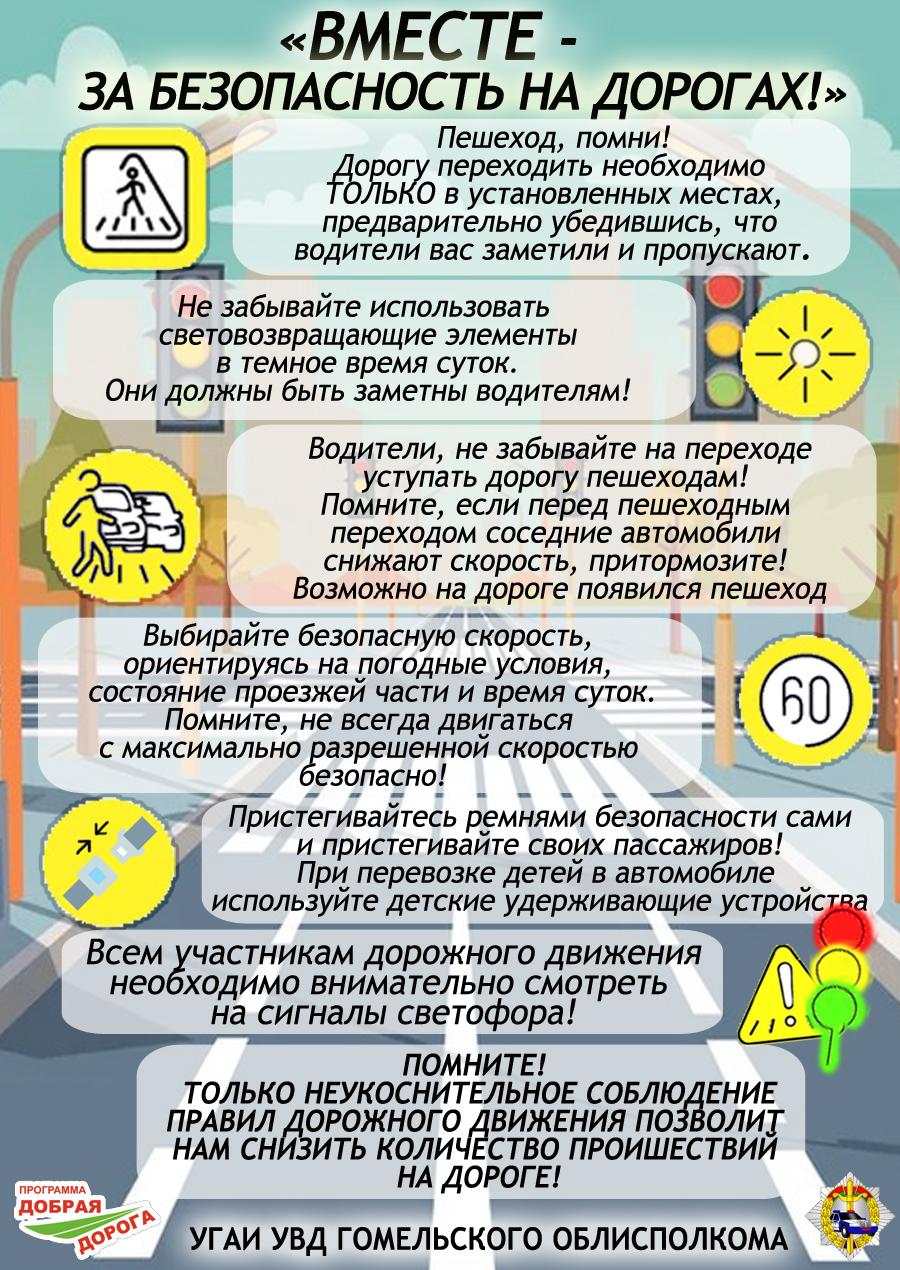
Events that no driver should forget
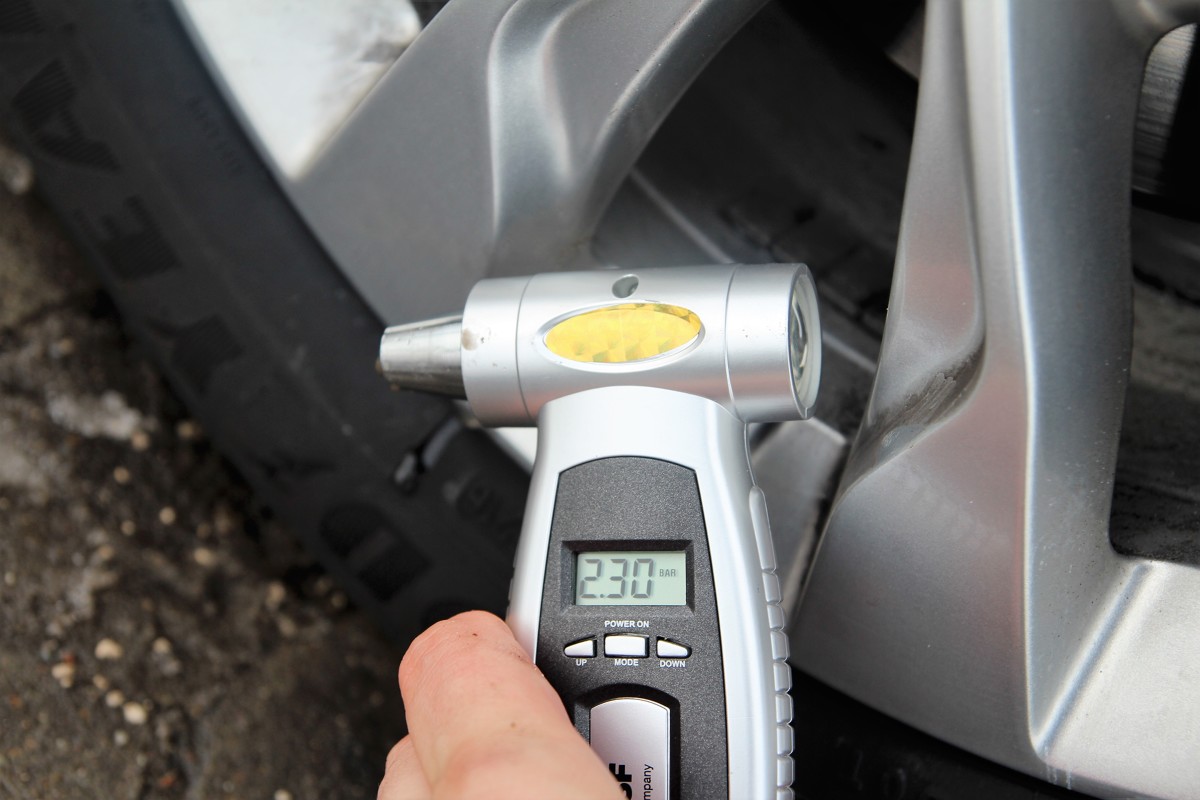 Many simple actions have a significant impact on driving safety and vehicle condition. Unfortunately, drivers often forget about them or ignore them.
Many simple actions have a significant impact on driving safety and vehicle condition. Unfortunately, drivers often forget about them or ignore them.
Many simple actions have a significant impact on driving safety and vehicle condition. Unfortunately, they are often forgotten or ignored by drivers, often incurring fines or serious maintenance costs. We remind you what to remember.
Checking tire pressure
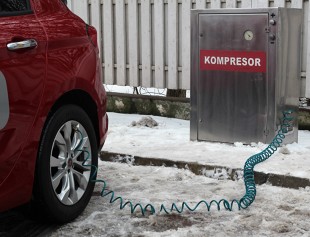 In terms of the vehicle's behavior on the road or the cost of its operation, regular monitoring of tire pressure is a key factor. It is not enough to check it during a seasonal wheel change or before a long trip. Even a change in temperature can contribute to a significant drop in air pressure in the tires. Under-inflated tires impair driving precision or the vehicle's behavior in critical situations, such as emergency braking or sudden detours.
In terms of the vehicle's behavior on the road or the cost of its operation, regular monitoring of tire pressure is a key factor. It is not enough to check it during a seasonal wheel change or before a long trip. Even a change in temperature can contribute to a significant drop in air pressure in the tires. Under-inflated tires impair driving precision or the vehicle's behavior in critical situations, such as emergency braking or sudden detours.
A pressure drop of 0,5-1,0 bar compared to that recommended by the manufacturer accelerates the wear of the outer parts of the tread, increases fuel consumption by at least a few percent, and increases the risk of aquaplaning (skidding along the water layer on the road). ), increases stopping distance and reduces cornering grip.
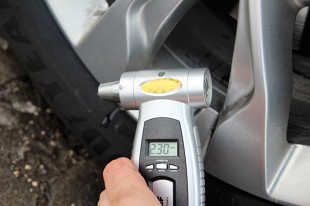 Experts recommend checking tire pressure every two weeks or before every longer trip - when planning a trip with passengers and luggage, you need to adjust the pressure to the manufacturer's recommended for driving a loaded car. We also remind you to regularly check the air pressure in the spare or temporary spare wheel! Under-puffed up will do little.
Experts recommend checking tire pressure every two weeks or before every longer trip - when planning a trip with passengers and luggage, you need to adjust the pressure to the manufacturer's recommended for driving a loaded car. We also remind you to regularly check the air pressure in the spare or temporary spare wheel! Under-puffed up will do little.
Pressure is best checked at gas stations. Wheels usually need to be inflated, so a compressor will come in handy. Unfortunately, their condition is different. The pressure declared by the device is therefore worth checking with your own pressure gauge - you can buy it for a dozen or so złoty at stations or in automotive stores.
Outdoor Lighting
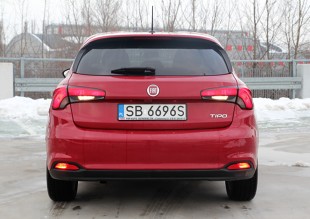 One of the requirements of the driving test is to be able to test the effectiveness of the car's exterior lighting. Unfortunately, many drivers then forget about it - the sight of cars with burnt out light bulbs is a common thing. Unfortunately, this greatly affects security. Luckily, checking lamp performance is quick and easy. It is enough to turn the key in the ignition and then turn on the following lights - position, dipped, road, fog and turn signals, leaving the car after each shift and making sure that this type of light works.
One of the requirements of the driving test is to be able to test the effectiveness of the car's exterior lighting. Unfortunately, many drivers then forget about it - the sight of cars with burnt out light bulbs is a common thing. Unfortunately, this greatly affects security. Luckily, checking lamp performance is quick and easy. It is enough to turn the key in the ignition and then turn on the following lights - position, dipped, road, fog and turn signals, leaving the car after each shift and making sure that this type of light works.
When checking the reversing lights, you can ask for help from another person or turn the key in the ignition and engage reverse gear. In the case of brake lights, you also need to get help. An alternative option is to look at the reflection of the car, for example, in the gas station glass. When checking the lighting, do not forget about the license plate light, and in modern cars also daytime running lights - they turn on when the engine is turned on.
 Speaking of daytime running lights, it should be remembered that they can be used from dawn to dusk, only in conditions of normal air transparency. In the event of precipitation, fog or tunnels marked with the sign, the dipped headlights must be switched on. There is a risk of 2 points for riding without the required lights from dawn to dusk. fine and 100 zł fine. Modern cars are often equipped with automatic lighting systems. However, they do not always switch the daytime running lights to low beam after a slight decrease in air transparency. It is worth remembering the type. You can also browse the car's settings menu - on many models, such as the new Fiat Tipo, you can adjust the system's sensitivity.
Speaking of daytime running lights, it should be remembered that they can be used from dawn to dusk, only in conditions of normal air transparency. In the event of precipitation, fog or tunnels marked with the sign, the dipped headlights must be switched on. There is a risk of 2 points for riding without the required lights from dawn to dusk. fine and 100 zł fine. Modern cars are often equipped with automatic lighting systems. However, they do not always switch the daytime running lights to low beam after a slight decrease in air transparency. It is worth remembering the type. You can also browse the car's settings menu - on many models, such as the new Fiat Tipo, you can adjust the system's sensitivity.
In vehicles without self-levelling headlights, the need to adjust the angle of incidence of the light beam when driving a loaded vehicle must not be forgotten. To do this, use the tabs in the on-board computer menu, knobs or - as in the case of the new Tipo - buttons on the dashboard.
ещение абины
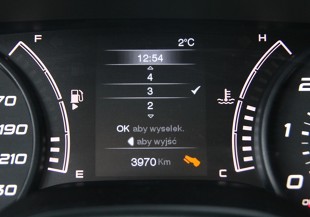 When driving at night, it is worth reducing the intensity of the illumination of the instrument panel, radio or buttons on the dashboard. This is usually done with a knob at the bottom of the cab, or - as in the case of the new Fiat Tipo - a tab in the on-board computer menu. The designers of the small car from Italy did not forget about the button for completely blanking the screen of the Uconnect multimedia system. This works well at night.
When driving at night, it is worth reducing the intensity of the illumination of the instrument panel, radio or buttons on the dashboard. This is usually done with a knob at the bottom of the cab, or - as in the case of the new Fiat Tipo - a tab in the on-board computer menu. The designers of the small car from Italy did not forget about the button for completely blanking the screen of the Uconnect multimedia system. This works well at night.
The minimum amount of light from the dashboard does not force the eye to constantly adapt to darkness or light after viewing, for example, a speedometer. And it is worth remembering that the full adaptation to low light, which becomes necessary after a second look at the road, can take up to several minutes. For the same reason, it is important to adjust the interior mirror for night driving. This is not necessary for drivers with photochromic mirrors, which automatically dim when driving at night.
Fluid control
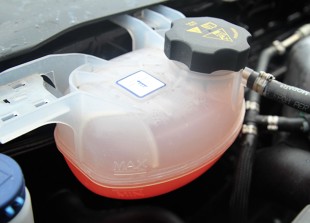 Drivers often forget to check fluids. The levels of coolant and brake fluid are actually rarely changed - both fluids start to go down with serious breakdowns. However, when opening the engine cover, it is worth checking if their mirror is between the levels on the expansion tanks marked with the symbols MIN and MAX.
Drivers often forget to check fluids. The levels of coolant and brake fluid are actually rarely changed - both fluids start to go down with serious breakdowns. However, when opening the engine cover, it is worth checking if their mirror is between the levels on the expansion tanks marked with the symbols MIN and MAX.
Concern about oil levels should encourage drivers to look under the hood regularly. It is used by all engines - new, worn, naturally aspirated, supercharged, gasoline and diesel. Much depends on the design of the drive and how it is operated. The oil level should be checked after the engine has warmed up.
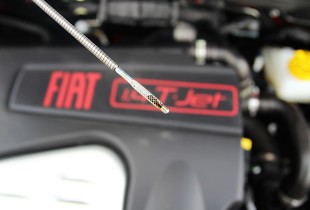 For reliable readings, the car must be on a level surface, and the engine must be turned off for at least two minutes (manufacturer's recommendations should be checked in the car's owner's manual). It remains to remove the dipstick, wipe it with a paper towel, reinsert the dipstick into the engine, remove it and read if the oil level is between the minimum and maximum levels.
For reliable readings, the car must be on a level surface, and the engine must be turned off for at least two minutes (manufacturer's recommendations should be checked in the car's owner's manual). It remains to remove the dipstick, wipe it with a paper towel, reinsert the dipstick into the engine, remove it and read if the oil level is between the minimum and maximum levels.
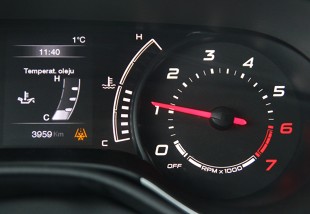 From the point of view of the durability of the engine, it is also important to treat the engine sparingly when it has not reached operating temperature. Until then, it is less lubricated. This also applies to his accessories. In order not to speed up engine wear, the driver should avoid strong gas in the first kilometers after starting a cold engine and try to keep the speed below 2000-2500 rpm. It should not be forgotten that reaching the operating temperature of the coolant at about 90 degrees Celsius does not mean that the engine is fully warmed up. It occurs later - even after a dozen or two kilometers from the start of movement - due to the slower heating of the oil. Unfortunately, many modern cars do not have an engine oil temperature gauge. The designers of the new Fiat Tipo did not forget about it, placing it in the on-board computer menu.
From the point of view of the durability of the engine, it is also important to treat the engine sparingly when it has not reached operating temperature. Until then, it is less lubricated. This also applies to his accessories. In order not to speed up engine wear, the driver should avoid strong gas in the first kilometers after starting a cold engine and try to keep the speed below 2000-2500 rpm. It should not be forgotten that reaching the operating temperature of the coolant at about 90 degrees Celsius does not mean that the engine is fully warmed up. It occurs later - even after a dozen or two kilometers from the start of movement - due to the slower heating of the oil. Unfortunately, many modern cars do not have an engine oil temperature gauge. The designers of the new Fiat Tipo did not forget about it, placing it in the on-board computer menu.
Passive safety
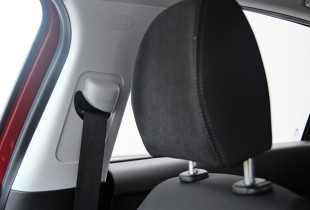 Modern cars are equipped with a variety of passive safety systems that protect the driver and passengers in a collision. An example is the new Fiat Tipo, which comes standard with six airbags, four head restraints and height-adjustable front seat belts. Unfortunately, even the best systems won't work properly if the driver neglects the basics. The starting point is the correct position of the chair. When the seatback is flush against the seatback, the driver should be able to rest their wrist on the steering wheel rim. The upper anchorage points of the seat belts must be adjusted so that the belt passes over the collarbone half way over the shoulder. Of course, seat belts must also be fastened by passengers in the back seat! Unfortunately, this is often ignored and often ends in tragedy. A neglected and extremely important event is the adjustment of the headrests.
Modern cars are equipped with a variety of passive safety systems that protect the driver and passengers in a collision. An example is the new Fiat Tipo, which comes standard with six airbags, four head restraints and height-adjustable front seat belts. Unfortunately, even the best systems won't work properly if the driver neglects the basics. The starting point is the correct position of the chair. When the seatback is flush against the seatback, the driver should be able to rest their wrist on the steering wheel rim. The upper anchorage points of the seat belts must be adjusted so that the belt passes over the collarbone half way over the shoulder. Of course, seat belts must also be fastened by passengers in the back seat! Unfortunately, this is often ignored and often ends in tragedy. A neglected and extremely important event is the adjustment of the headrests.
 According to experts, they are incorrectly regulated in 80% of cases. Of course, it would be different if drivers and passengers knew that with an incorrectly adjusted head restraint, even a minor collision with the back of our car can lead to damage to the cervical spine, and in the best case, to a sprain. The headrest adjustment itself is quick and easy. It is enough to press the button (usually located at the junction with the chair) and adjust them so that the center of the headrest is at the level of the back of the head.
According to experts, they are incorrectly regulated in 80% of cases. Of course, it would be different if drivers and passengers knew that with an incorrectly adjusted head restraint, even a minor collision with the back of our car can lead to damage to the cervical spine, and in the best case, to a sprain. The headrest adjustment itself is quick and easy. It is enough to press the button (usually located at the junction with the chair) and adjust them so that the center of the headrest is at the level of the back of the head.
 If you choose to carry your child in the front seat in a rear facing position, be sure to deactivate the airbag. This is usually done using a switch in the glove compartment on the passenger side or the right side of the dashboard - accessible after opening the door. In some models, such as the new Fiat Tipo, the passenger airbag can be deactivated using the on-board computer.
If you choose to carry your child in the front seat in a rear facing position, be sure to deactivate the airbag. This is usually done using a switch in the glove compartment on the passenger side or the right side of the dashboard - accessible after opening the door. In some models, such as the new Fiat Tipo, the passenger airbag can be deactivated using the on-board computer.